Abstract
Brain material from 750 domestic and wild animals submitted to this laboratory for rabies diagnosis was studied by the following three methods: a) microscopic examination of Williams' stained impressions, b) mouse inoculation test, and c) microscopic examination of impressions stained with fluorescein-tagged antibodies. The purpose of this investigation was to compare the sensitivity of the fluorescent antibody technique with that of two classical methods, when applied to the routine diagnosis of rabies. From the results obtained by one or the other method of study, 175 specimens were diagnosed as positive. Of these, only 58 (33 per cent) were detected by the examination of Williams' stained impressions. On the other hand, two rabid cases were missed by the mouse inoculation test, and four by the fluorescent antibody technique. Without being completely reliable, the last two methods proved to be almost equally sensitive and much more so than the examination of Williams' stained impressions.
Full text
PDF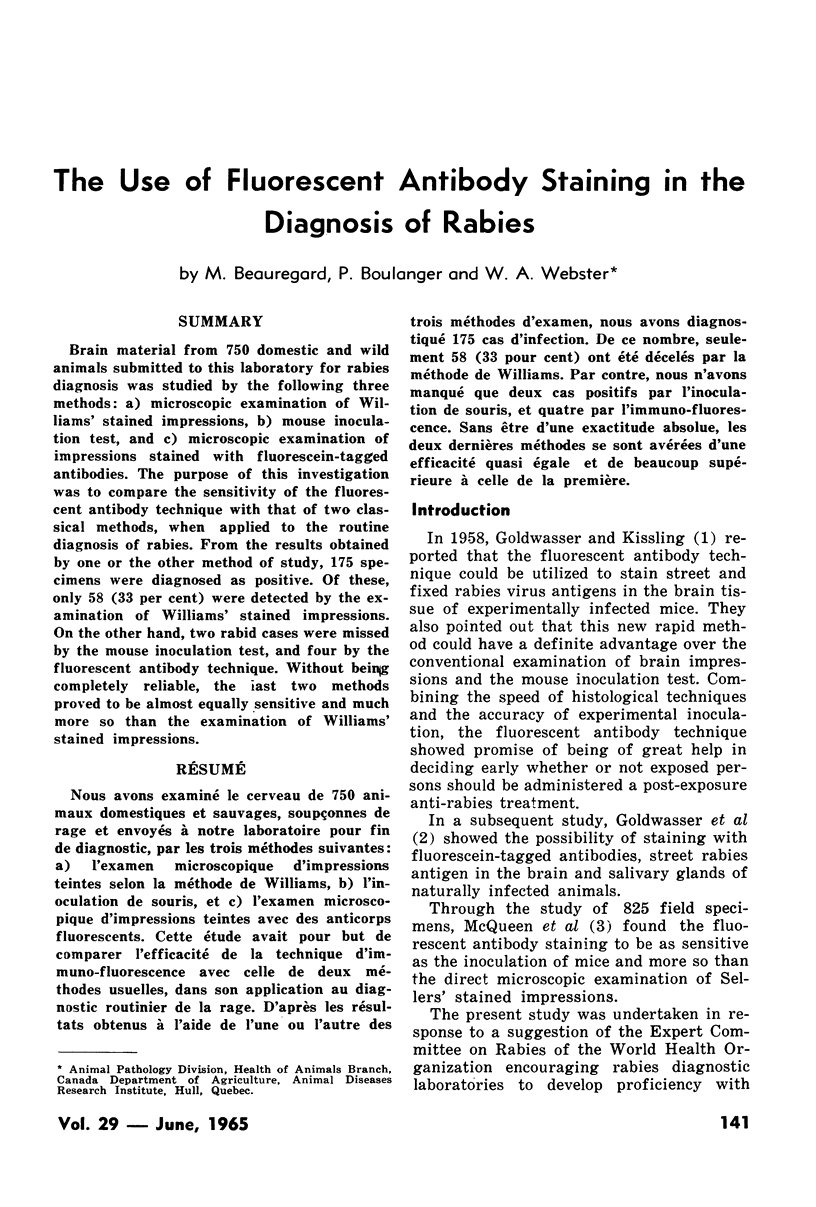
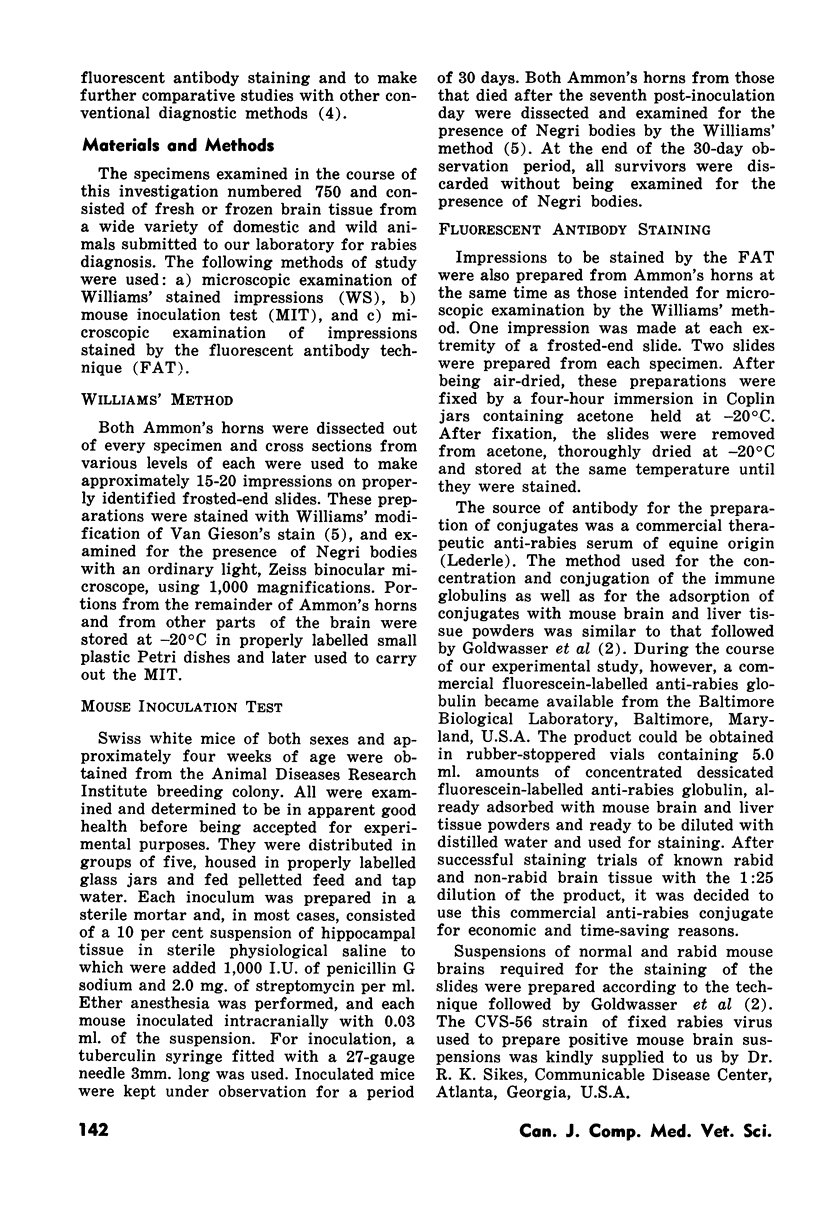
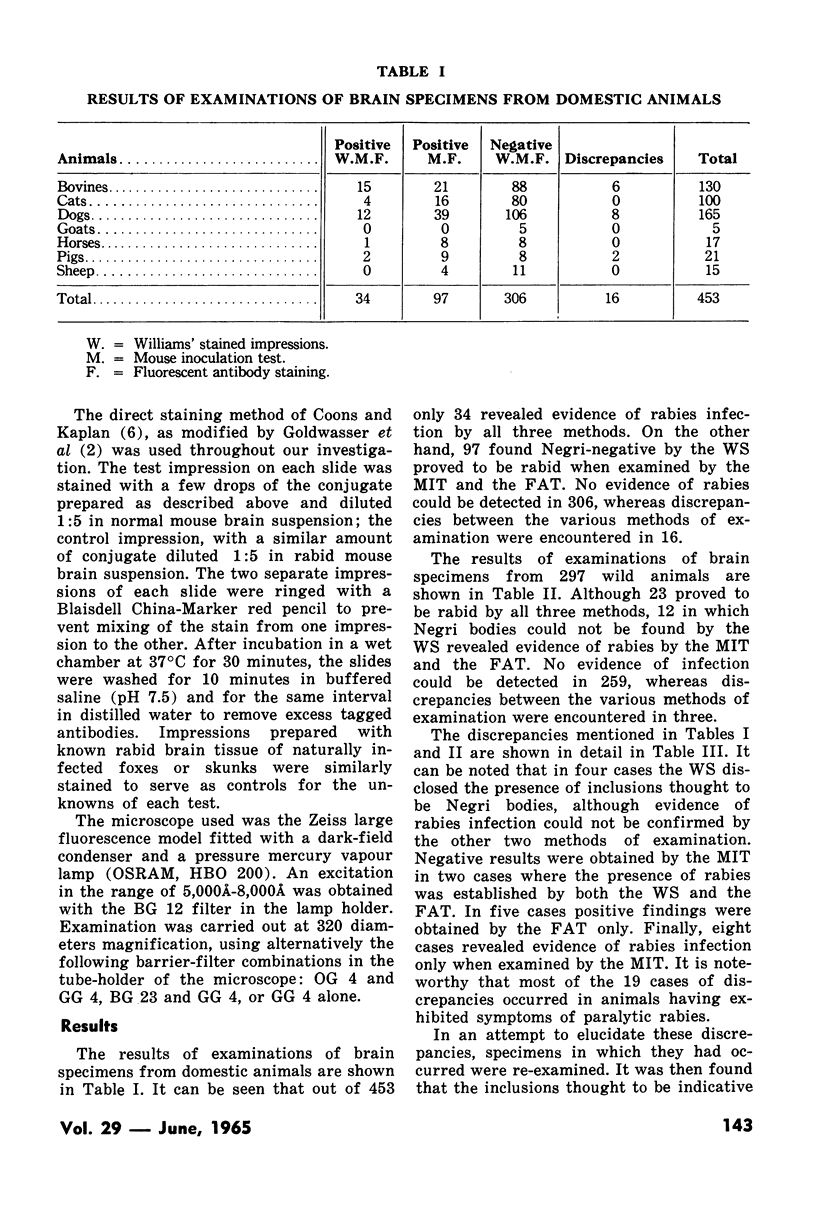

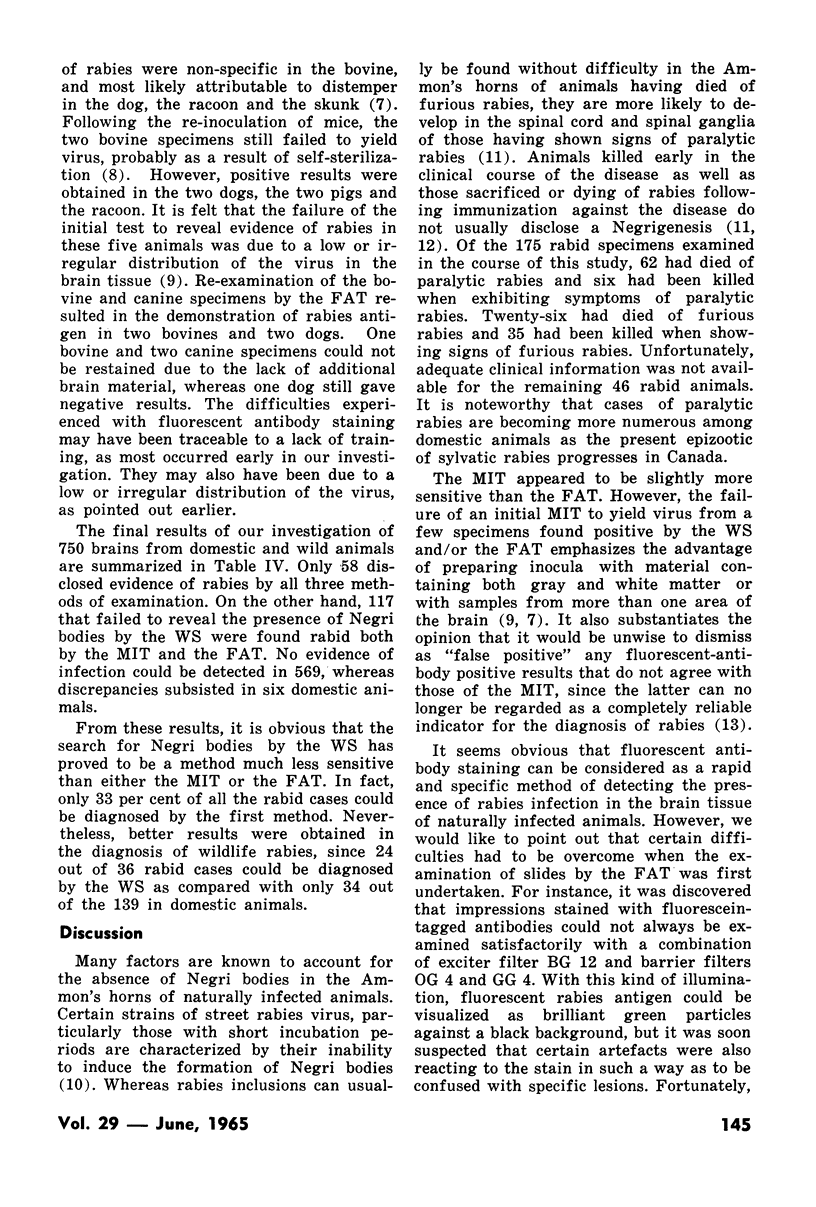

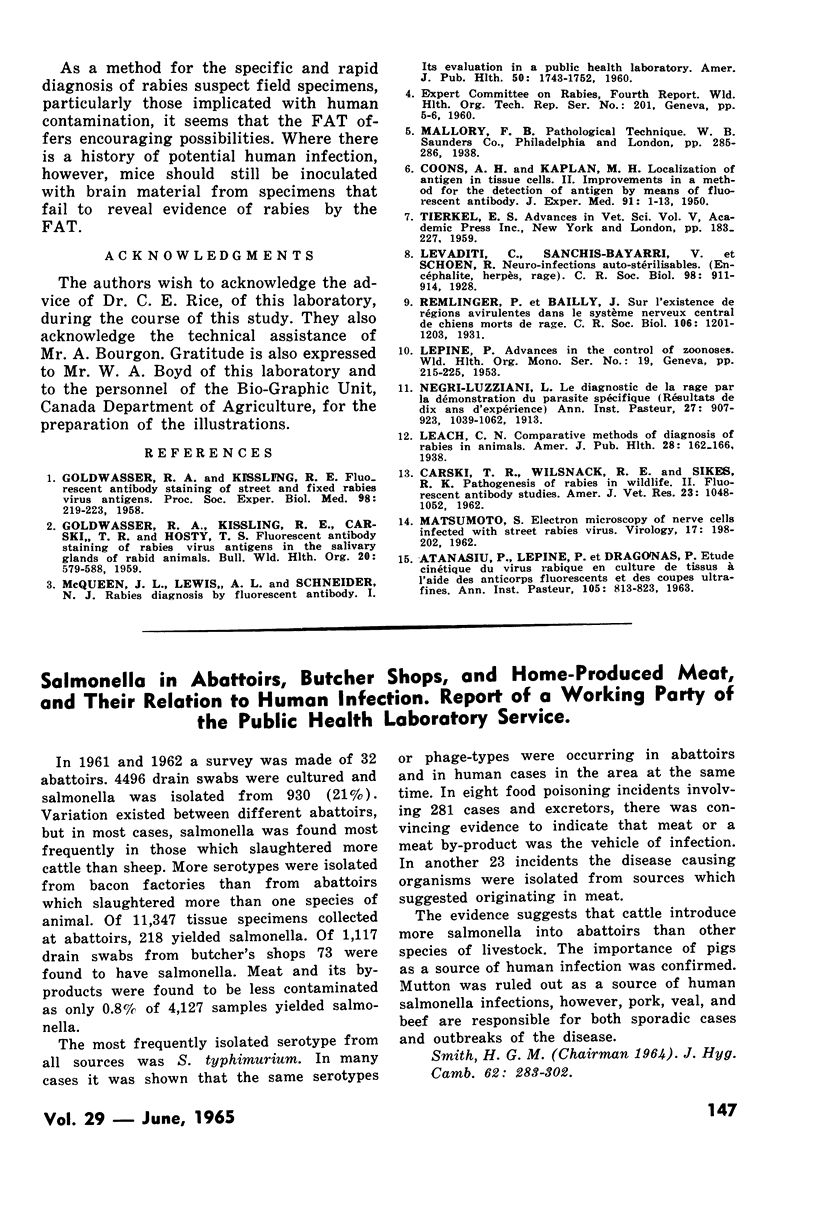
Images in this article
Selected References
These references are in PubMed. This may not be the complete list of references from this article.
- ATANASIU P., LEPINE P., DRAGONAS P. ETUDE CIN'ETIQUE DU VIRUS RABIQUE EN CULTURE DES TISSUS 'A L'AIDE DES ANTICORPS FLUORESCENTS ET DES COUPES ULTRA-FINES. Ann Inst Pasteur (Paris) 1963 Nov;105:813–824. [PubMed] [Google Scholar]
- COONS A. H., KAPLAN M. H. Localization of antigen in tissue cells; improvements in a method for the detection of antigen by means of fluorescent antibody. J Exp Med. 1950 Jan 1;91(1):1–13. doi: 10.1084/jem.91.1.1. [DOI] [PMC free article] [PubMed] [Google Scholar]
- GOLDWASSER R. A., KISSLING R. E., CARSKI T. R., HOSTY T. S. Fluorescent antibody staining of rabies virus antigens in the salivary glands of rabid animals. Bull World Health Organ. 1959;20:579–588. [PMC free article] [PubMed] [Google Scholar]
- GOLDWASSER R. A., KISSLING R. E. Fluorescent antibody staining of street and fixed rabies virus antigens. Proc Soc Exp Biol Med. 1958 Jun;98(2):219–223. doi: 10.3181/00379727-98-23996. [DOI] [PubMed] [Google Scholar]
- Leach C. N. Comparative Methods of Diagnosis of Rabies in Animals. Am J Public Health Nations Health. 1938 Feb;28(2):162–166. doi: 10.2105/ajph.28.2.162. [DOI] [PMC free article] [PubMed] [Google Scholar]
- MATSUMOTO S. Electron microscopy of nerve cells infected with street rabies virus. Virology. 1962 May;17:198–202. doi: 10.1016/0042-6822(62)90099-5. [DOI] [PubMed] [Google Scholar]
- MCQUEEN J. L., LEWIS A. L., SCHNEIDER N. J. Rabies diagnosis by fluorescent antibody. I. Its evaluation in a public health laboratory. Am J Public Health Nations Health. 1960 Nov;50:1743–1752. doi: 10.2105/ajph.50.11.1743. [DOI] [PMC free article] [PubMed] [Google Scholar]





